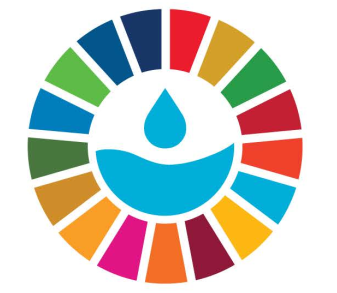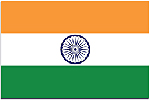100 million people: Accelerating impact in Sanitation and Hygiene
LIXIL
(
Private sector
)
#SDGAction50824
Description
Global sanitation and hygiene is one of LIXIL’s three strategic pillars for addressing urgent global issues under our corporate purpose to “make better homes a reality for everyone, everywhere,” and is positioned as a priority among our material issues. We have set out to improve sanitation and hygiene for 100 million people around the world by 2025 through the introduction of innovative and affordable toilet and hand hygiene solutions. SATO Toilet Solutions are a range of simple and aspirational, yet affordable, toilets and connection systems designed for use in rural and urban areas lacking access to reliable sanitation. Flushing requires less than one liter of water, using a counterweight trapdoor that otherwise remains closed to reduce odors and prevent insects, such as flies, from spreading bacteria. The original SATO model was developed based on the needs of communities in Bangladesh and production and sales began in the country – SATO’s first market – in 2013. SATO products are currently manufactured in six countries of Asia and Africa. Diverse Products Tailored to Local Needs: We now offer an increasingly diverse range of SATO products to reach a broader range of customers’ needs and create a sustainable social business. These include the traditional SATO Pan for constructing latrines, the Flex Pan for more affordable retrofit, and the SATO Stool to help engage children, older people, or people with physical challenges. SATO’s Connection Systems for offset pit latrines, the I-Trap and the V-Trap, enable rapid installation and make it easier to achieve safely managed sanitation. In India, for example, where the government promoted a twin-pit system, we developed the V-Trap toilet system to address local problems of clogging and time-consuming installation. By replacing the traditional, fixed approach to installation with an adjustable V-shaped unit that also uses our unique trap door, the V-Trap toilet enables fast, reliable installation of a twin-pit latrine. That, when combined with a SATO toilet, reduces the risk of clogging and requires approximately 80% less water per flush than conventional toilets. Twin-pit latrines built with SATO are an affordable and effective way to achieve safely managed sanitation in India, and in broader markets. SATO Tap was developed in FYE2021 as an affordable handwashing solution for use in the home or local community to help prevent the spread of COVID-19. SATO Tap uses water in a plastic bottle of various shapes and sizes and uses gravity to release a minimal but stable water flow. As little as 100ml is needed for each hand wash, which is 90% less water than needed with a traditional tap. With a plastic base and nozzle that can easily be manufactured, its simplicity helps keep production costs and retail prices low. Plastic bottles are typically easy to access and, as the SATO Tap promotes their reuse, this product also helps reduce plastic waste.
To date, approximately 6.5 million units of SATO’s innovative sanitation and hygiene solutions have been distributed to 45 countries, contributing to better sanitation for an estimated 35 million people (as of June, 2022). However, we cannot achieve the desired impact through product innovation alone. SATO uses a comprehensive approach that extends to the training of local masons and entrepreneurs, and to the development of reliable local manufacturing and distribution capabilities under our Make-Sell-Use business model. We also pursue imaginative outreach methods for raising awareness of global sanitation and hygiene challenges among people in urban and rural areas with the most urgent needs, building sustainable frameworks that help improve sanitary environments and quality of life and empower rural entrepreneurship. Nurturing Human Capital and Rural Entrepreneurship through SATO Operations: In addition to product innovation, we collaborate with local manufacturers and NGOs to build regional production capacity and sales systems, and nurture local human capital to maximize the benefits and impact of SATO product installations. We do this through our Make-Sell-Use business model that seeks to create sustainable local sanitation economies by fostering rural entrepreneurship, generating regional employment, and facilitating continuous local improvements. The training of local masons and plumbers who install SATO toilets is key. To date, more than 19,000 people, including women and young people, in India, Uganda, Nigeria, Tanzania, and other countries have participated in free training programs designed in conjunction with NGOs and international organizations. These training programs are generating improvements in toilet installations and income. We have also started leveraging digital platforms not only to continue mason training during the pandemic, but also to drive demand for rural mason marts and for our local retailers and partners as we seek to engage more people in greatest need of improved sanitation in rural and urban communities.
Leveraging Global and Local Partnerships to Maximize Community Value: Partnerships are essential for maximizing the impact of our sanitation and hygiene products and marketing and sales activities. We benefit from the strengths of various global organizations, specialist organizations, NGOs, and business partners to help us tailor products, build local production and network hubs, and drive market demand through skills training, sales promotion, and awareness building. UNICEF: In FYE2022, LIXIL expanded our MAKE A SPLASH! global partnership with UNICEF to tackle the sanitation challenge in India, Indonesia, and Nigeria, three of the world’s most populous countries. This expansion complements the original partnership launched in FYE2019 which reached 2.9 million people in Ethiopia, Kenya, and Tanzania. The partnership aims to collaborate on new product lines, leverage financing to support local sanitation economies, and to support policy and regulations that strengthen the sector. In Tanzania, we have been cooperating on a government-driven campaign to ensure universal toilet access by 2025. In India, we installed SATO toilets under UNICEF’s #FlushTheVirus campaign to support healthcare professionals during the COVID-19 pandemic. We also collaborated on SATO Tap prototype tests in Bangladesh, India, Tanzania, Kenya, and Ethiopia, enabling us to commercialize the product based on feedback from potential users and retailers. USAID: Building on the Memorandum of Understanding (MoU) signed in October 2020, LIXIL and the United States Agency for International Development (USAID) launched a new five-year cooperative agreement, the Partnership for Better Living (PBL), in October 2021 to improve sustainable access to basic sanitation for two million people by 2026 through the deployment of SATO toilets and SATO Tap handwashing stations in up to 11 countries in sub-Saharan Africa and Asia. The PBL is LIXIL’s first direct partnership with USAID, who will co-invest $10 million. JICA: LIXIL and JICA, leveraging their strengths, are working together to improve sanitation and secure access to safe water in developing countries. Since FYE2021, we have been working together in India to raise awareness of hygienic practices such as handwashing. We also collaborated with JICA in FYE2021 to provide a webinar on global sanitation and hygiene to government officials involved in public health from five African countries. Thanks to our partnership work with the agency, JICA officially recognized LIXIL as a JICA-SDGs Partner for our efforts to help achieve the SDGs. BRAC, PSI, and Other NGOs: We work with experienced NGOs, such as Bangladesh Rural Advancement Committee (BRAC) in Bangladesh and Population Services International (PSI) in Kenya, to build the value chains that enable SATO installation, to lobby governments to promote sanitation measures, and to receive feedback on product development. Toilet Board Coalition: LIXIL is a member of the Toilet Board Coalition, a global alliance of public and private sector partners that aims to develop sustainable solutions to the sanitation crisis. As co-founder of the Toilet Board Coalition, we have served as chair, and we are now assisting with the running of the organization, mentoring entrepreneurs who tackle sanitation problems, and engaging in advocacy.
USAID Partnership for Better Living: https://www.globalwaters.org/content/partnership-better-living UNICEF Make a Splash! Partnership: https://www.lixil.com/en/makeasplash/ SATO: https://sato.lixil.com/
SDGS & Targets
Goal 3
Ensure healthy lives and promote well-being for all at all ages
3.1
3.1.1
Maternal mortality ratio
3.1.2
Proportion of births attended by skilled health personnel
3.2
3.2.1
Under-five mortality rate
3.2.2
Neonatal mortality rate
3.3
By 2030, end the epidemics of AIDS, tuberculosis, malaria and neglected tropical diseases and combat hepatitis, water-borne diseases and other communicable diseases
3.3.1
Number of new HIV infections per 1,000 uninfected population, by sex, age and key populations
3.3.2
Tuberculosis incidence per 100,000 population
3.3.3
Malaria incidence per 1,000 population
3.3.4
Hepatitis B incidence per 100,000 population
3.3.5
Number of people requiring interventions against neglected tropical diseases
3.4
3.4.1
Mortality rate attributed to cardiovascular disease, cancer, diabetes or chronic respiratory disease
3.4.2
Suicide mortality rate
3.5
Strengthen the prevention and treatment of substance abuse, including narcotic drug abuse and harmful use of alcohol
3.5.1
Coverage of treatment interventions (pharmacological, psychosocial and rehabilitation and aftercare services) for substance use disorders
3.5.2
Alcohol per capita consumption (aged 15 years and older) within a calendar year in litres of pure alcohol
3.6
3.6.1
Death rate due to road traffic injuries
3.7
By 2030, ensure universal access to sexual and reproductive health-care services, including for family planning, information and education, and the integration of reproductive health into national strategies and programmes
3.7.1
Proportion of women of reproductive age (aged 15-49 years) who have their need for family planning satisfied with modern methods
3.7.2
Adolescent birth rate (aged 10-14 years; aged 15-19 years) per 1,000 women in that age group
3.8
Achieve universal health coverage, including financial risk protection, access to quality essential health-care services and access to safe, effective, quality and affordable essential medicines and vaccines for all
3.8.1
Coverage of essential health services
3.8.2
Proportion of population with large household expenditures on health as a share of total household expenditure or income
3.9
3.9.1
Mortality rate attributed to household and ambient air pollution
3.9.2
Mortality rate attributed to unsafe water, unsafe sanitation and lack of hygiene (exposure to unsafe Water, Sanitation and Hygiene for All (WASH) services)
3.9.3
Mortality rate attributed to unintentional poisoning
3.a
3.a.1
Age-standardized prevalence of current tobacco use among persons aged 15 years and older
3.b
Support the research and development of vaccines and medicines for the communicable and non-communicable diseases that primarily affect developing countries, provide access to affordable essential medicines and vaccines, in accordance with the Doha Declaration on the TRIPS Agreement and Public Health, which affirms the right of developing countries to use to the full the provisions in the Agreement on Trade-Related Aspects of Intellectual Property Rights regarding flexibilities to protect public health, and, in particular, provide access to medicines for all
3.b.1
Proportion of the target population covered by all vaccines included in their national programme
3.b.2
3.b.3
Proportion of health facilities that have a core set of relevant essential medicines available and affordable on a sustainable basis
3.c
3.c.1
Health worker density and distribution
3.d
Strengthen the capacity of all countries, in particular developing countries, for early warning, risk reduction and management of national and global health risks
3.d.1
International Health Regulations (IHR) capacity and health emergency preparedness
3.d.2
Percentage of bloodstream infections due to selected antimicrobial-resistant organisms
Goal 5
Achieve gender equality and empower all women and girls
5.1
End all forms of discrimination against all women and girls everywhere
5.1.1
Whether or not legal frameworks are in place to promote, enforce and monitor equality and non‑discrimination on the basis of sex
5.2
5.2.1
Proportion of ever-partnered women and girls aged 15 years and older subjected to physical, sexual or psychological violence by a current or former intimate partner in the previous 12 months, by form of violence and by age
5.2.2
Proportion of women and girls aged 15 years and older subjected to sexual violence by persons other than an intimate partner in the previous 12 months, by age and place of occurrence
5.3
5.3.1
Proportion of women aged 20-24 years who were married or in a union before age 15 and before age 18
5.3.2
Proportion of girls and women aged 15-49 years who have undergone female genital mutilation/cutting, by age
5.4
Recognize and value unpaid care and domestic work through the provision of public services, infrastructure and social protection policies and the promotion of shared responsibility within the household and the family as nationally appropriate
5.4.1
Proportion of time spent on unpaid domestic and care work, by sex, age and location
5.5
Ensure women’s full and effective participation and equal opportunities for leadership at all levels of decision-making in political, economic and public life
5.5.1
Proportion of seats held by women in (a) national parliaments and (b) local governments
5.5.2
Proportion of women in managerial positions
5.6
Ensure universal access to sexual and reproductive health and reproductive rights as agreed in accordance with the Programme of Action of the International Conference on Population and Development and the Beijing Platform for Action and the outcome documents of their review conferences
5.6.1
Proportion of women aged 15-49 years who make their own informed decisions regarding sexual relations, contraceptive use and reproductive health care
5.6.2
Number of countries with laws and regulations that guarantee full and equal access to women and men aged 15 years and older to sexual and reproductive health care, information and education
5.a
Undertake reforms to give women equal rights to economic resources, as well as access to ownership and control over land and other forms of property, financial services, inheritance and natural resources, in accordance with national laws
5.a.1
(a) Proportion of total agricultural population with ownership or secure rights over agricultural land, by sex; and (b) share of women among owners or rights-bearers of agricultural land, by type of tenure
5.a.2
Proportion of countries where the legal framework (including customary law) guarantees women’s equal rights to land ownership and/or control
5.b
5.b.1
Proportion of individuals who own a mobile telephone, by sex
5.c
Adopt and strengthen sound policies and enforceable legislation for the promotion of gender equality and the empowerment of all women and girls at all levels
5.c.1
Proportion of countries with systems to track and make public allocations for gender equality and women’s empowerment
Goal 6
Ensure availability and sustainable management of water and sanitation for all
6.1
By 2030, achieve universal and equitable access to safe and affordable drinking water for all
6.1.1
Proportion of population using safely managed drinking water services
6.2
By 2030, achieve access to adequate and equitable sanitation and hygiene for all and end open defecation, paying special attention to the needs of women and girls and those in vulnerable situations
6.2.1
Proportion of population using (a) safely managed sanitation services and (b) a hand-washing facility with soap and water
6.3
By 2030, improve water quality by reducing pollution, eliminating dumping and minimizing release of hazardous chemicals and materials, halving the proportion of untreated wastewater and substantially increasing recycling and safe reuse globally
6.3.1
Proportion of domestic and industrial wastewater flows safely treated
6.3.2
Proportion of bodies of water with good ambient water quality
6.4
6.4.1
Change in water-use efficiency over time
6.4.2
Level of water stress: freshwater withdrawal as a proportion of available freshwater resources
6.5
By 2030, implement integrated water resources management at all levels, including through transboundary cooperation as appropriate
6.5.1
Degree of integrated water resources management
6.5.2
Proportion of transboundary basin area with an operational arrangement for water cooperation
6.6
6.6.1
Change in the extent of water-related ecosystems over time
6.a
6.a.1
Amount of water- and sanitation-related official development assistance that is part of a government-coordinated spending plan
6.b
Support and strengthen the participation of local communities in improving water and sanitation management
6.b.1
Proportion of local administrative units with established and operational policies and procedures for participation of local communities in water and sanitation management
Goal 9
Build resilient infrastructure, promote inclusive and sustainable industrialization and foster innovation
9.1
9.1.1
Proportion of the rural population who live within 2 km of an all-season road
9.1.2
Passenger and freight volumes, by mode of transport
9.2
Promote inclusive and sustainable industrialization and, by 2030, significantly raise industry’s share of employment and gross domestic product, in line with national circumstances, and double its share in least developed countries
9.2.1
Manufacturing value added as a proportion of GDP and per capita
9.2.2
Manufacturing employment as a proportion of total employment
9.3
9.3.1
Proportion of small-scale industries in total industry value added
9.3.2
Proportion of small-scale industries with a loan or line of credit
9.4
By 2030, upgrade infrastructure and retrofit industries to make them sustainable, with increased resource-use efficiency and greater adoption of clean and environmentally sound technologies and industrial processes, with all countries taking action in accordance with their respective capabilities
9.4.1
CO2 emission per unit of value added
9.5
9.5.1
Research and development expenditure as a proportion of GDP
9.5.2
Researchers (in full-time equivalent) per million inhabitants
9.a
9.a.1
Total official international support (official development assistance plus other official flows) to infrastructure
9.b
9.b.1
Proportion of medium and high-tech industry value added in total value added
9.c
Significantly increase access to information and communications technology and strive to provide universal and affordable access to the Internet in least developed countries by 2020
9.c.1
Proportion of population covered by a mobile network, by technology
Goal 17
Strengthen the means of implementation and revitalize the Global Partnership for Sustainable Development
17.1
Strengthen domestic resource mobilization, including through international support to developing countries, to improve domestic capacity for tax and other revenue collection
17.1.1
17.1.2
17.2
Developed countries to implement fully their official development assistance commitments, including the commitment by many developed countries to achieve the target of 0.7 per cent of ODA/GNI to developing countries and 0.15 to 0.20 per cent of ODA/GNI to least developed countries; ODA providers are encouraged to consider setting a target to provide at least 0.20 per cent of ODA/GNI to least developed countries
17.2.1
17.3
Mobilize additional financial resources for developing countries from multiple sources
17.3.1
Additional financial resources mobilized for developing countries from multiple sources
17.3.2
17.4
Assist developing countries in attaining long-term debt sustainability through coordinated policies aimed at fostering debt financing, debt relief and debt restructuring, as appropriate, and address the external debt of highly indebted poor countries to reduce debt distress
17.4.1
17.5
Adopt and implement investment promotion regimes for least developed countries
17.5.1
Number of countries that adopt and implement investment promotion regimes for developing countries, including the least developed countries
17.6
Enhance North-South, South-South and triangular regional and international cooperation on and access to science, technology and innovation and enhance knowledge sharing on mutually agreed terms, including through improved coordination among existing mechanisms, in particular at the United Nations level, and through a global technology facilitation mechanism
17.6.1
Fixed broadband subscriptions per 100 inhabitants, by speed
17.7
Promote the development, transfer, dissemination and diffusion of environmentally sound technologies to developing countries on favourable terms, including on concessional and preferential terms, as mutually agreed
17.7.1
Total amount of funding for developing countries to promote the development, transfer, dissemination and diffusion of environmentally sound technologies
17.8
Fully operationalize the technology bank and science, technology and innovation capacity-building mechanism for least developed countries by 2017 and enhance the use of enabling technology, in particular information and communications technology
17.8.1
17.9
Enhance international support for implementing effective and targeted capacity-building in developing countries to support national plans to implement all the Sustainable Development Goals, including through North-South, South-South and triangular cooperation
17.9.1
Dollar value of financial and technical assistance (including through North-South, South‑South and triangular cooperation) committed to developing countries
17.10
Promote a universal, rules-based, open, non-discriminatory and equitable multilateral trading system under the World Trade Organization, including through the conclusion of negotiations under its Doha Development Agenda
17.10.1
17.11
Significantly increase the exports of developing countries, in particular with a view to doubling the least developed countries’ share of global exports by 2020
17.11.1
Developing countries’ and least developed countries’ share of global exports
17.12
Realize timely implementation of duty-free and quota-free market access on a lasting basis for all least developed countries, consistent with World Trade Organization decisions, including by ensuring that preferential rules of origin applicable to imports from least developed countries are transparent and simple, and contribute to facilitating market access
17.12.1
Weighted average tariffs faced by developing countries, least developed countries and small island developing States
17.13
Enhance global macroeconomic stability, including through policy coordination and policy coherence
17.13.1
17.14
Enhance policy coherence for sustainable development
17.14.1
17.15
Respect each country’s policy space and leadership to establish and implement policies for poverty eradication and sustainable development
17.15.1
17.16
Enhance the Global Partnership for Sustainable Development, complemented by multi-stakeholder partnerships that mobilize and share knowledge, expertise, technology and financial resources, to support the achievement of the Sustainable Development Goals in all countries, in particular developing countries
17.16.1
Number of countries reporting progress in multi-stakeholder development effectiveness monitoring frameworks that support the achievement of the Sustainable Development Goals
17.17
Encourage and promote effective public, public-private and civil society partnerships, building on the experience and resourcing strategies of partnerships
17.17.1
Amount in United States dollars committed to public-private partnerships for infrastructure
17.18
By 2020, enhance capacity-building support to developing countries, including for least developed countries and small island developing States, to increase significantly the availability of high-quality, timely and reliable data disaggregated by income, gender, age, race, ethnicity, migratory status, disability, geographic location and other characteristics relevant in national contexts
17.18.1
Statistical capacity indicators
17.18.2
17.18.3
Number of countries with a national statistical plan that is fully funded and under implementation, by source of funding
17.19
By 2030, build on existing initiatives to develop measurements of progress on sustainable development that complement gross domestic product, and support statistical capacity-building in developing countries
17.19.1
17.19.2
Proportion of countries that (a) have conducted at least one population and housing census in the last 10 years; and (b) have achieved 100 per cent birth registration and 80 per cent death registration
SDG 14 targets covered
| Name | Description |
|---|
Deliverables & Timeline
improve sanitation and hygiene for 100 million people around the world by 2025 through the introduction of innovative and affordable toilet and hand hygiene solutions.
Resources mobilized
Partnership Progress
Feedback
Action Network

Timeline
Entity
Region
- Africa
- Asia and Pacific
- Latin America and the Caribbean
Other beneficiaries
N/A
More information
Countries































Contact Information
Erin, SVP; Leader, SATO and LIXIL Public Partners

